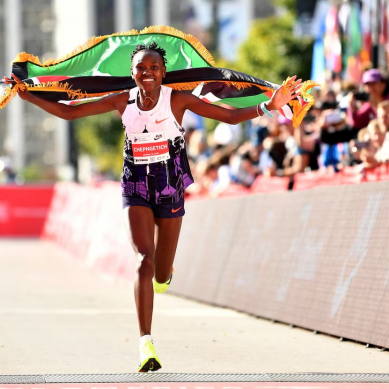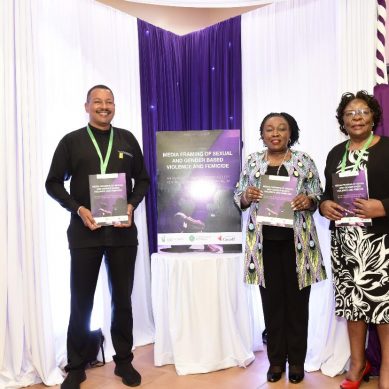
After Rojin was rescued from IS captivity and reunited with his family in Kurdish region of Iraq, he was taken to Yazidi House, a social and cultural institution where former captives go through a de-radicalisation before rejoining the community in Iraq.
Their phones are taken away, and they are placed in the home of a local family to learn about Yazidi customs and beliefs.
“The aim is to slowly get the people to let go of their past beliefs and return to the Yazidi faith by being immersed in the culture,” said Ismail Dalf, who co-heads Yazidi House. “It is very hard for a lot of them – they want to pray five times a day; they want to have a Quran.”
Dalf said it would be unsafe to send them home indoctrinated with their captors’ beliefs. “Sinjari society is tough,” he said. “There would be a response if the person does Islamic prayers or something like that.”
Rojin said he found the process exhausting and started to despair he would ever see his family. While in captivity, he said, he had adopted a new identity: Rojin from Sinjar became Abdullah from Syria. It took time to shed that identity, but now, he said, “I do feel a new persona has been born. I am 100 per cent, maybe 95 per cent Rojin.”
On December 14, 2023 – after nearly a month with the host family – his uncle arrived to drive him back to Iraq. It had been nine years since he last saw a man he thought of as a second father. They hugged and cried.
“I thought he was gone,” Saeed recalled, sitting with his nephews on mattresses in their sparsely furnished two-room house. “Then he emerged as if back from the grave.”
When Islamic State was at its peak between 2014 and 2016, there were many such rescues. Yazidis with contacts in IS-held territory-built networks of informants and smugglers to get people out.
Abdallah Shrem, a Sinjar beekeeper, is credited by Yazidi activists with arranging over 400 rescues. Shrem said he worked with smugglers who brought cigarettes into IS territory and would pay them four times their usual fee to bring Yazidis out. His network grew to include bakers, waste collectors and others with access to homes where Yazidis were held.
Back then, it was easier to find captives, Shrem said. IS followers would post photographs of slaves they wanted to sell online. Sympathetic slaveholders – or those looking to make a quick profit – could sometimes be persuaded to sell them back to families, who would beg and borrow to raise the money.
Rescue office chief Bozani said the office has reimbursed around $6 million of these expenses, but it can take time to raise the funds. The Talals have not received anything yet for Rojin’s rescue, they said.
The number of rescues dropped sharply as IS began losing territory and was driven underground.
At least 204 Yazidis were freed in 2019, when the IS “caliphate” collapsed in Syria, but just 57 have returned to Iraq in the years since, according to figures compiled by the rescue office. The figures may not include some freed captives who chose to remain in Syria, returned to Iraq on their own or moved to third countries, the office said.
Some Yazidis were mixed in with IS fighters and family members who fled to Idlib or slipped over the border into Turkey, Bozani said. But the majority of those found since 2020 were being held in al-Hol, the detention camp for IS families where Rojin said he was taken.
Dalf, from Yazidi House, said former captives told him there were dozens more Yazidis being held there by IS families. Camp officials said they try to find Yazidis hidden among some 40,000 detainees in the sprawling tent city but are hampered by IS loyalists who have carried out dozens of killings there.
“Every once in a while, we get information that a Yazidi woman is in a tent, but when they realise that we know, they hide them,” said Jihan Hanan, the camp’s director, who is also convinced there are more Yazidis there.
The State Department said coalition forces were working with the SDF to disrupt IS networks that threaten camp residents but noted that attempts to identify Yazidis were “sensitive operations” that could “endanger the very people we seek to protect.”
Yazidi captives are often too afraid to seek help, four survivors said. Rafida Naif, a 26-year-old Yazidi woman, spent 20 months at al-Hol. She said she feared she would be killed if she identified herself to guards and wasn’t immediately removed from the IS family she was with. When the family would hear a vehicle approaching their tent, she said, they would hide her in a hole and cover it with cardboard or bedding.
By a stroke of luck, she said, she was swept up with other residents for questioning after a fight broke out. Alone with camp officials, she revealed her story. After her release, she said, she left her toddler, fathered by an Iraqi militant, at a nearby orphanage.
“I’ve had no contact with him since I came back,” Naif said of the boy. She was speaking by phone from a camp for displaced people in Kurdistan, where she still lives four years later. “He is from their blood, not mine, and it happened through rape.”
The orphanage said it is caring for about 20 children surrendered under similar circumstances. But some women prefer to remain in al-Hol than give them up, Naif and activists said. Others take their children abroad, joining an estimated 120,000 Yazidis who have left Iraq since 2014.
It can also be hard to persuade kidnapped boys to come home, rescuers said.
The militants “give boys a motorbike, weapons, a car,” said Shrem, the beekeeper, who has resumed farming in Sinjar but still helps organise rescues. “They create an atmosphere that is attractive for adolescents.”
It has been over a year since a former child soldier Shrem helped free in 2018, Adnan Zandenan, received a Facebook message from a younger brother he presumed was dead.
“My hands were trembling. I thought one of my friends was messing with me,” Zandenan, now 21, recalled as he smoked a water pipe in his garden in Sinjar’s Wardiya village.
But his elation quickly turned to despair when the 18-year-old refused to leave Idlib, where he now lives.
Shrem said he assured the teen he would be welcomed with open arms and would find money, a car and a wife. Every few days, Zandenan sends his brother another message, but he is losing hope of persuading him.
“He thinks Daesh are his family. He doesn’t know that his family are here,” Zandenan said.
The brother’s identity is hidden for his safety.
Tens of thousands of displaced Yazidis still live in shabby tent camps in Kurdistan. Some are taking advantage of cash aid offered by the Iraqi government to help them move back to Sinjar, but others say the aid is not sufficient.
Much of the district remains largely destroyed. Security is also a problem: Ethnic and religious militias that helped drive IS out of Sinjar have refused to demobilise and Turkey carries out drone strikes against some of them.
Employment options are few, especially for those whose education was disrupted by the war. Zandenan works as a day labourer, helping Yazidis rebuild shattered homes. Naif got married in September and plans to remain for now in Kurdistan, where her husband runs a cell phone store.
For the Talal brothers, Aydin and Rojin, it has been harder to see a way forward. Aydin wanted to go back to school but was put off when told he would be in a class with 9- and 10-year-olds. He is living off aid and learning to play the buzuq, a long-necked lute.
Rojin is still adjusting to life as a Yazidi. He is more comfortable speaking Arabic than his native Kurdish and punctuates his sentences with Islamic expressions. He too dreams of studying and travelling abroad. But his main wish, he said, is to be a “normal person” with a calm life.
His brother worries about how quiet he has become – not like the happy, chatty child he remembers. Saeed said he often finds his nephews whispering about their time with IS, only to fall silent when he approaches.
Rojin Talal ,who was kidnapped by the Islamic State group, often spends time with his brother and uncle at their home in Dohuk. He too was captured in the attack on their village but managed to escape when IS guards weren’t looking. He sent his wife and four children to Germany for safety and stayed behind to look for missing relatives.
Rojin is one of 10 family members he helped rescue. Thirteen others are still missing. He suspects some are buried in mass graves and is frustrated about how long it is taking Iraqi authorities to excavate them. But he says he won’t stop looking for them.
“If I don’t do it, who will?” Saeed asked.
- A Reuters report







